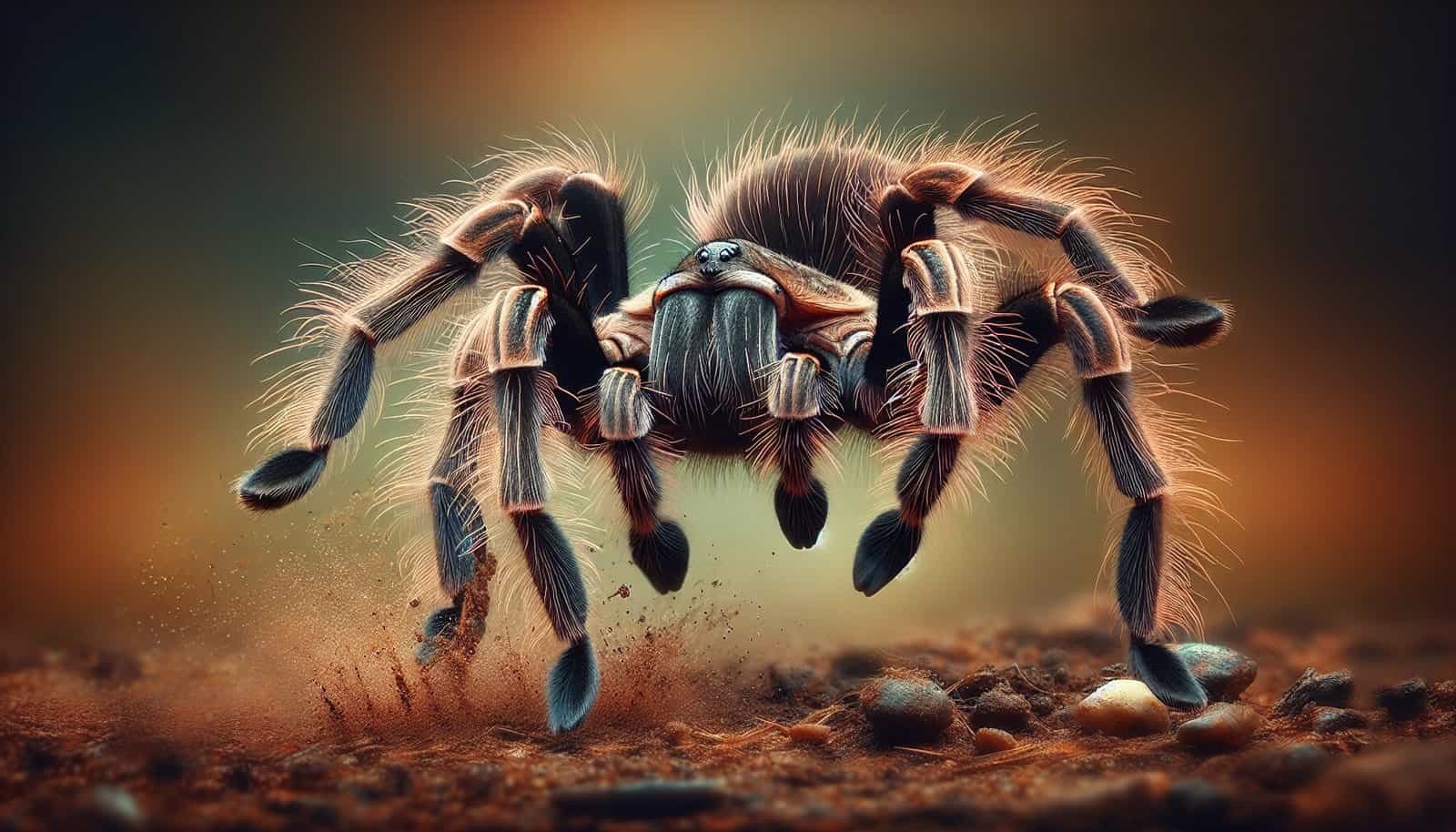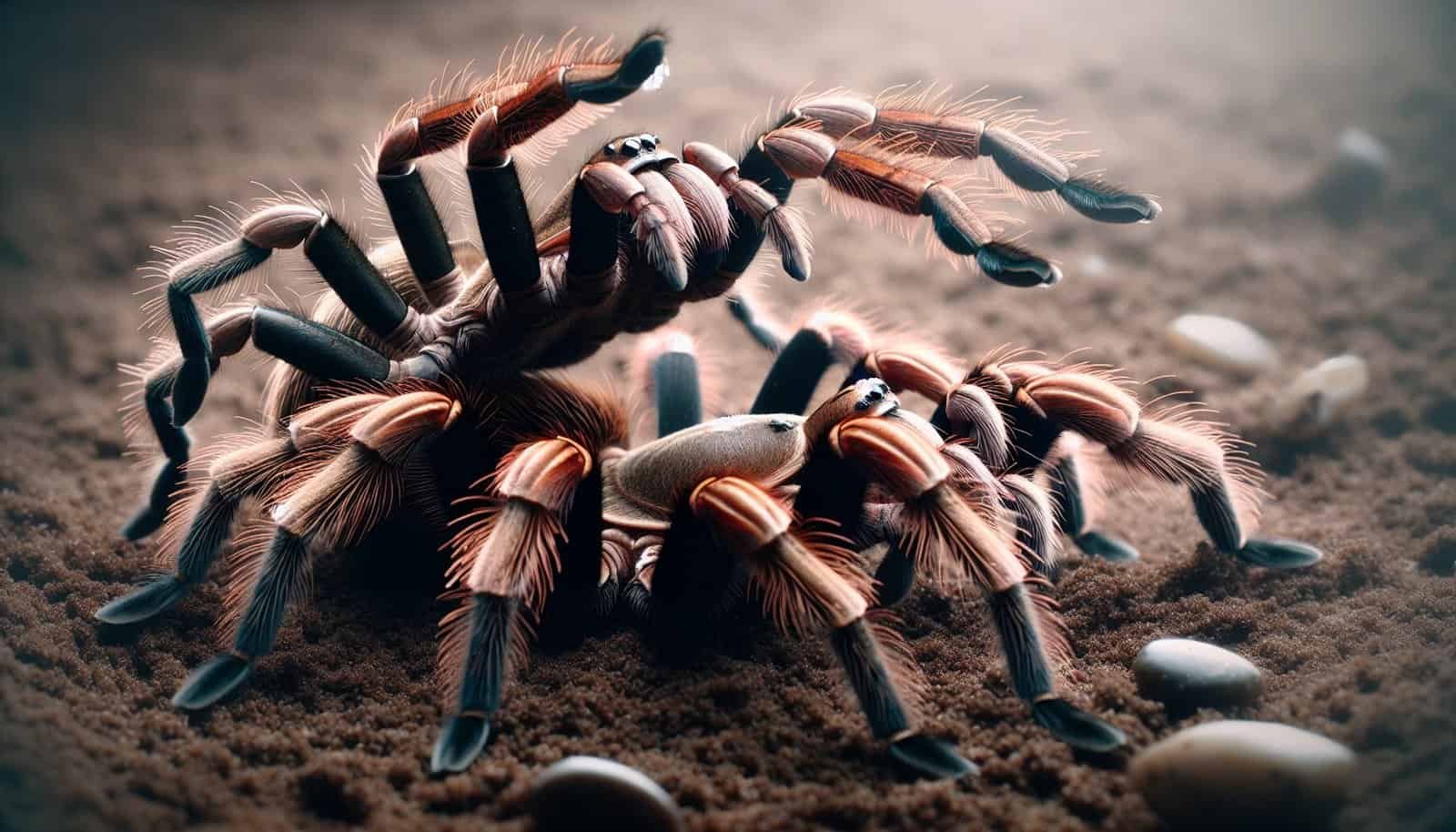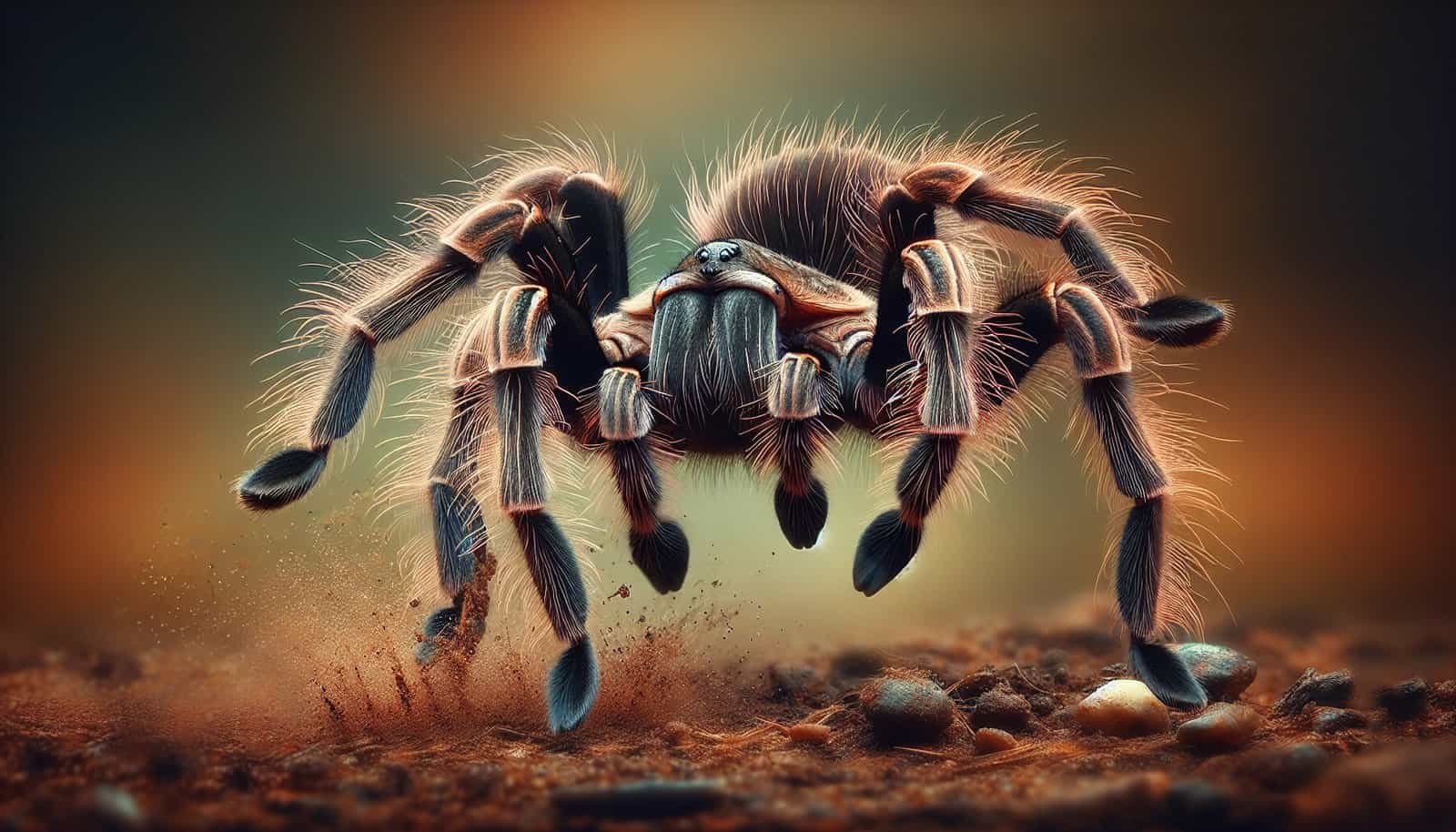If you’re lucky enough to witness the fascinating process of tarantula mating, you may be wondering what specific behaviors to look out for. Is it a delightful dance, a fierce battle, or something entirely unexpected? In this article, we’ll explore the intriguing world of tarantula courtship and uncover the behaviors you should keep a keen eye on. From subtle displays to daring acrobatics, these remarkable creatures have their unique ways of finding love. So grab your magnifying glass and get ready to be amazed by the captivating behaviors of tarantulas during the mating process. The tarantula mating process is a fascinating and intricate dance between males and females. Understanding this process can provide valuable insight into the behaviors and interactions of these captivating creatures. In this article, we will provide an overview of the tarantula mating process, explore the behaviors exhibited by male and female tarantulas, discuss physical cues and displays, highlight distinctive behaviors in different tarantula species, address potential obstacles and interruptions, delve into observing mating in captive tarantulas, and examine the importance of understanding reproductive success and contributions of observation studies.

Overview of Tarantula Mating Process
Courtship rituals
The courtship rituals of tarantulas are complex and varied, depending on the species. Male tarantulas use a range of behaviors and displays to attract females, including drumming, leg tapping, and dancing movements. These rituals serve to communicate the male’s intentions and fitness to the female, as well as to initiate and establish a connection between potential mates.
Mating behaviors
Once the courtship rituals have been successful, tarantulas engage in specific mating behaviors. Male tarantulas approach the female cautiously, ensuring they do not trigger aggressive responses. Physical contact between the male and female occurs, and the transfer of sperm from the male to the female takes place.
Post-mating activities
After successful mating, both male and female tarantulas exhibit post-mating activities. Female tarantulas store sperm for later use, while males may leave behind a sperm web. These post-mating activities are essential for the reproductive success of the tarantulas and play a vital role in the continuation of their species.
Male Tarantula Behaviors
Wandering and searching for a mate
Male tarantulas are often observed wandering in search of a mate. They may roam extensively in their habitat, actively seeking out female tarantulas through chemical cues and vibrations. This behavior is an essential part of the mating process, as it allows males to locate receptive females and initiate courtship rituals.
Drumming and leg tapping
To get the attention of a female tarantula, male tarantulas employ various forms of communication. Drumming and leg tapping are common behaviors exhibited by males, serving to produce vibrations that can be perceived by females. These rhythmic movements and sounds are believed to signal the male’s presence, fitness, and readiness to mate.
Approaching the female
Approaching the female during courtship is a critical behavior displayed by male tarantulas. It is important for males to approach the female cautiously and avoid triggering aggression. Slow and deliberate movements, as well as careful positioning, are employed by males to ensure a successful interaction and minimize the risk of harm.
Harboring sperm webs
After mating, male tarantulas may deposit a sperm web near the female’s burrow. This web serves as a physical indication that mating has occurred and provides a potential future source of sperm for the female. By leaving behind a sperm web, males increase the chances of their genetic material being used for reproduction.
Female Tarantula Behaviors
Receptivity signals
Female tarantulas exhibit distinct behaviors and physical cues to signal their receptivity to males. These signals can include raising their abdomen, exposing their fangs, or engaging in certain movements. By displaying receptivity signals, females indicate to males their willingness to engage in courtship and mate.
Web weaving and burrowing
Weaving intricate webs and burrowing are essential behaviors for female tarantulas during the mating process. Females create elaborate silk structures, including egg sacs and retreats, to enhance their chances of reproductive success. Web weaving and burrowing also provide protection and shelter, ensuring a safe environment for themselves and their offspring.
Approaching or rejecting the male
Upon the initiation of courtship, females have the choice to either approach or reject the male. If the female is receptive, she may make deliberate movements towards the male, indicating her interest in continuing the mating process. However, females also have the ability to reject advances by adopting aggressive postures or retreating into their burrows.
Storing sperm
One of the distinctive reproductive abilities of female tarantulas is their ability to store sperm for extended periods. After mating, females can retain sperm within their bodies, allowing for multiple egg-laying events without needing to mate again. This ability provides flexibility and allows females to optimize their reproductive output.
Physical Cues and Displays
Size and coloration
Physical characteristics, such as size and coloration, play a significant role in the mating process of tarantulas. Males often display vibrant colors or ornate patterns, while females tend to be larger and more robust. These visual cues can attract a potential mate and convey important information about an individual’s fitness and health.
Dancing movements
Dancing movements are a visually striking behavior exhibited by male tarantulas during courtship. Males may perform sophisticated and intricate dance routines, involving leg movements and body postures. These mesmerizing displays serve to capture the attention of females and demonstrate the male’s agility, strength, and desirability as a mate.
Flicking of hairs
Tarantulas possess specialized hairs called urticating hairs, which can be flicked off their bodies as a defense mechanism. However, during courtship, males may also use hair flicking as a form of communication. In some species, males may flick their urticating hairs towards the female, possibly as a display of courtship or as a means to stimulate the female’s receptivity.
Exposing fangs
Another behavior observed during courtship is the deliberate exposure of fangs by male tarantulas. This behavior, known as “fang flashing,” may serve as a visual cue or a tactile stimulation for the female. Exposing their fangs can communicate dominance or aggressiveness, as well as provide the female with a tactile experience during the courtship process.

Distinctive Behaviors in Different Tarantula Species
Handstands and raising abdomen
Certain tarantula species stand out due to their unique behaviors during courtship. For example, male Brachypelma albopilosum tarantulas are known to perform handstands, raising their abdomen and presenting it to the female. This behavior serves as a specific courtship display, demonstrating the male’s fitness and willingness to mate.
Jerky movements and buzzing sounds
In some tarantula species, males exhibit jerky movements, accompanied by buzzing sounds during courtship. This distinctive behavior is observed in the Australian tarantula Selenotypus plumipes. The combination of erratic movements and buzzing serves to capture the female’s attention and initiate courtship.
Aggressive posturing
Aggressive posturing is a notable behavior in certain tarantula species, such as the African baboon spider (Pelinobius muticus). During courtship, males of this species may adopt defensive or aggressive postures to convey their dominance and protect against potential threats. These behaviors can play a role in the female’s decision to accept or reject the male’s advances.
Predator-like behaviors
Some tarantula species display intricate and sophisticated predator-like behaviors during courtship. For instance, the Mexican red-knee tarantula (Brachypelma smithi) engages in a series of lunging movements, mimicking the predatory behavior of its natural prey. These behaviors serve to stimulate the female’s hunting instincts and are thought to be a significant part of courtship rituals in this species.
Potential Obstacles and Interruptions
Interference from other males
The presence of rival males can often create obstacles and interruptions during the tarantula mating process. Competition for mates can result in territorial disputes, aggressive encounters, or even fights between males. This competition can lead to interruptions in courtship and may impact the overall success of the mating process.
Cannibalism
One of the well-known obstacles in tarantula mating is the potential risk of cannibalism. Female tarantulas are known to be cannibalistic, especially in the presence of potential mates. Male tarantulas must carefully approach females and execute courtship rituals to minimize the risk of becoming a meal. Cannibalism can disrupt the mating process and pose a significant threat to males.
Environmental influences
Environmental factors, such as temperature, humidity, or lighting conditions, can influence the mating behaviors of tarantulas. Suboptimal environmental conditions may discourage or inhibit courtship behaviors. Understanding these influences is crucial for successful captive breeding programs and maintaining healthy populations of tarantulas.
Lack of interest or refusal
Despite the courtship efforts of male tarantulas, females may display a lack of interest or outright refusal to mate. Females have the ability to reject advances through aggressive behaviors, retreat into their burrows, or simply ignore approaching males. These refusals can be a significant obstacle in the mating process, preventing the establishment of successful pairings.

Observing Mating in Captive Tarantulas
Sexing and pairing
Observing mating in captive tarantulas begins with the initial step of accurately sexing and pairing individuals. Determining the sex of tarantulas can be challenging, as sexual dimorphism is not always obvious. Properly identifying males and females is essential for successful breeding attempts and the observation of mating behaviors.
Creating a suitable habitat
To effectively observe mating behaviors in captive tarantulas, it is crucial to provide a suitable habitat that mimics their natural environment. This includes providing appropriate substrate, temperature, humidity, and hiding spots. A well-designed habitat enhances the comfort and natural behaviors of tarantulas, increasing the likelihood of observing courtship and mating.
Monitoring courtship behaviors
When observing captive tarantulas, careful monitoring of courtship behaviors is crucial. Close attention should be paid to the interactions between males and females, including drumming, leg tapping, and other courtship rituals. Continuous observation allows for the documentation of specific behaviors and the understanding of individual mating dynamics.
Recording notable activities
Keeping detailed records of notable activities during the mating process is essential for further analysis and documentation. These records can include timestamps, descriptions of behaviors observed, and any significant events. Noting the duration of courtship, successful mating, or interruptions provides valuable data that can contribute to scientific understanding and captive breeding efforts.
Understanding Reproductive Success
Frequency of mating
The frequency of mating is an important factor in understanding tarantula reproductive success. Some tarantula species engage in frequent mating, while others mate less frequently. Studying the mating frequency of different species can provide insights into their reproductive strategies and contribute to our understanding of their life cycles.
Egg-laying and hatching
Observing egg-laying and hatching is a significant aspect of understanding tarantula reproductive success. Females carefully construct and protect egg sacs, ensuring the survival and development of their offspring. Documenting the process of egg-laying and hatching contributes to our knowledge of reproductive biology and the nurturing behaviors of tarantulas.
Survival rates of offspring
Assessing the survival rates of tarantula offspring is paramount for determining reproductive success. Monitoring the development and survival of spiderlings can provide insights into the effectiveness of courtship behaviors, the viability of stored sperm, and the suitability of captive conditions. Understanding survival rates is essential for successful captive breeding programs and the conservation of tarantula species.
Parental care and maturity
Tarantulas exhibit varying degrees of parental care, ranging from minimal involvement to extensive nurturing. Observing parental behaviors, such as the protection of eggs or active provisioning for spiderlings, contributes to our understanding of reproductive success. Additionally, documenting the age at which tarantulas reach sexual maturity is crucial for conservation efforts and captive breeding programs.

Contributions of Observation Studies
Advancing scientific knowledge
Observation studies of tarantula mating behaviors contribute significantly to our understanding of these fascinating creatures. By documenting and analyzing courtship rituals, mating behaviors, and reproductive success, researchers can uncover new insights into tarantula biology, evolution, and ecology. This knowledge helps advance our scientific understanding of these enigmatic arachnids.
Documenting rare behaviors
Tarantula observation studies also allow for the documentation of rare and rarely observed behaviors. Some courtship behaviors or specific interactions may be infrequent, making them challenging to observe in their natural habitats. Captive observations provide opportunities to document and study these rare behaviors, expanding our knowledge of tarantulas beyond what is typically observed.
Informing conservation efforts
Understanding tarantula mating behaviors is essential for effective conservation efforts. By studying courtship behaviors, reproductive success, and potential obstacles, researchers can develop strategies to protect and conserve threatened tarantula species. This knowledge informs conservation management plans, captive breeding programs, and habitat restoration initiatives.
Tarantula breeding practices
Observation studies of tarantula mating behaviors also have practical applications in tarantula breeding practices. By understanding the specific behaviors and requirements for successful mating, breeders can optimize breeding conditions and increase the success rate of captive reproduction. This knowledge is crucial for sustaining healthy captive populations and reducing the demand for wild-caught tarantulas.
Conclusion
The tarantula mating process is a complex and fascinating phenomenon. The courtship rituals, mating behaviors, and post-mating activities exhibited by male and female tarantulas provide valuable insights into their biology and reproductive strategies. Understanding the physical cues and distinctive behaviors displayed by different tarantula species is crucial for accurately interpreting their interactions and reproductive success. Despite potential obstacles and interruptions, observing mating in captive tarantulas allows for the documentation of courtship behaviors and contributes to scientific knowledge. Furthermore, understanding reproductive success and the contributions of observation studies is essential for conservation efforts, tarantula breeding practices, and advancing our understanding of these remarkable creatures.

